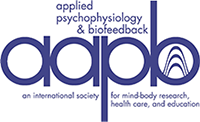Uncommon Surface Electromyography
Surface electromyography (SEMG) can be used as a tool to help gain the return/discovery of motor function in those with disabilities. This article presents the case of “Joey,” an 18-month-old toddler. An already challenging case due to age is made even more difficult considering his genetically based multiple impairments. SEMG provided a window of opportunity, previously unavailable, to allow Joey to demonstrate the new motor skills that he was capable of learning.Abstract

Percentage improvement targeting the use of the bilateral gluteus maximus and quadriceps muscles over 9 weeks.

Percentage of time standing with all four muscles recruited at or above threshold over 4 weeks.

Joey at work. Note bilateral supramalleolar orthoses (SMOs; to control severe pronation and supination). Pronation is the lowering of the medial margin of the foot; supination is a raising of the medial margin. SMOs are commonly prescribed devices, visible on the child's feet, and designed to assist standing balance and walking. In this photo, both knees are externally rotated, most likely to provide a wider base of support, but it is a beginning.

Contributor Notes
